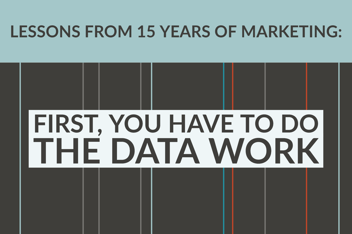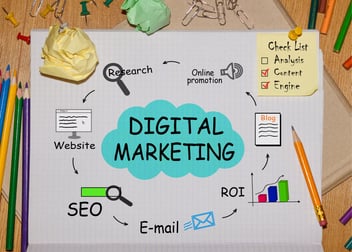Two More Marketing Metrics Your Boss Actually Cares About

As marketers, we would love to think that it is always our own hard work that brings new customers in. After all, that IS what we do.
The reality, however, is that customers do come to our companies in a variety of ways—referrals, repeat business, or cold calls by sales. The onus is on us to prove that what we do is influential, especially if we are introducing a change to the marketing strategy, such as inbound marketing content or digital marketing on social media.
Two of the key metrics marketing departments can use to prove to the executive suite that marketing does have a direct impact on the bottom line are:
-
Marketing originated customer percentage
-
Marketing influenced customer percentage
We’ve talked before about the marketing metrics your boss actually cares about, reviewing four other key figures you should calculate:
-
How to Calculate the Bottom Line Marketing Metrics That Mean Business
-
5 Marketing Metrics Your CFO Doesn’t Care About and 2 She Does
Here is how to determine the last two of six outlined in our ebook.
Marketing Originated Customer Percentage
Just how many of your customers come to your company as a direct result of your inbound marketing efforts? Your boss will want to know.
The Marketing Originated Customer Percentage is a ratio that shows how much new business is driven by marketing by determining which, or how many of your total customer acquisitions directly originated from marketing efforts.
As with many of your most meaningful marketing metrics, finding this figure requires using closed loop marketing, which tracks individual leads and customers from their first engagement with your website through to a completed sale. Using your closed loop marketing data, determine how many of the customers in a set period originated with your inbound marketing.
Formula:
New customers that started as a marketing lead ¸ New customers in a month = Marketing Originated Customer %
Here is an example:
Total new customers in a month = 10,000
Total new customers started as a marketing lead = 5,00
Marketing Originated Customer % = 5,000 ¸ 10,000 = .5 = 50%
So, why does it matter?
Marketing Originated Customer Percentage illustrates the impact your inbound marketing efforts have on acquiring new customers. The ratio will vary depending on your company structure and whether there is an emphasis on an outside sales team (which would likely mean a smaller portion of customers are marketing originated) or an emphasis on an inside sales team and lead generation through inbound marketing.
Marketing Influenced Customer Percentage
Marketing’s influence on customer acquisition isn’t limited to that “first touch” of lead generation. Marketing can also play a role in closing sales with leads generated through other sources as well. That is the impact being measured with the Marketing Influenced Customer Percentage.
The Marketing Influenced Customer Percentage takes into account all of the new customers that marketing interacted with while they were leads, at any point in the sales process from generating new leads to nurturing existing leads or helping sales close the deal.
To determine overall influence, take all of the new customers your company accrued in a given period and determine how many of them had any interaction with marketing while they were a lead.
Formula:
Total new customers that interacted with marketing ¸ Total new customers = Marketing Influence Customer Percentage
Here is an example:
Total new customers in a month = 10,000
Total new customers that interacted with marketing = 7,000
Marketing Influenced Customers = 7,000 ¸ 10,000 = .7 = 70%
By calculating this figure, you can give your CEO or CFO a broader look into the overall impact that marketing has on the entire sales process.
Q3 reports are coming up soon. What figures are you going to share with top management? Get the formulas for calculating all 6 Marketing Metrics Your Boss Actually Cares About in one convenient ebook here.
-1.png?width=1652&height=294&name=Jones(RGB)-1.png)












